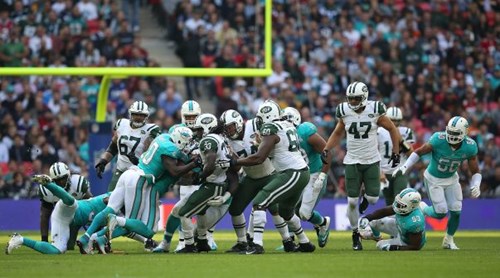With UCFB set to reveal the locations of its global hubs over the coming weeks, we thought we’d dive into some facts and figures about some of the countries that will play host to these exciting new additions to the UCFB family.
Australia, Canada and the US are home to some of the biggest names, clubs and brands in sport, as some of the numbers below demonstrate…
US
- The 2026 FIFA World Cup will be the first to be hosted jointly by three countries – the US, Mexico and Canada. The tournament is estimated to generate US$14 billion in revenue. Ten of the 16 host cities will be in the US, with the final set to take place at the MetLife Stadium in New Jersey.
- According to the latest Forbes World’s Most Valuable Sports Team rankings, the NFL’s Dallas Cowboys are leading the way with a value of US$4.8 billion. In fact, only seven of the top 50 teams are not American. 29 of the 32 NFL teams make the list, along with eight NBA sides and six from MLB.
- Taking into account projected increases in media rights deals, the sports industry in North America is expected to reach a value of nearly US$75 billion in 2019 – roughly 10% of the global industry’s total worth.

Nearly every team in the NFL feature in Forbes’ Most Valuable Sports Team rankings.
Australia
- Football (soccer) is the most popular sport in Australia by participation, rising by 46% between 2001 and 2016. International interest in Australian soccer peaked in 2018 when Usain Bolt, the world’s fastest man, had a two-month trial with the Central Coast Mariners. Despite scoring twice for the Mariners in a pre-season friendly, Bolt and the A-League couldn’t agree a deal.
- Australia has been home to some of the most decorated swimmers in the world – Ian Thorpe and Dawn Fraser to name just two. Perhaps part of the reasons for such success in the water is down to the number of swimming pools in the country. A recent survey found that 13% of Australians (around 2.7 million people) lived in a house with a pool. Unsurprisingly, sunny Queensland was the region with the biggest number – 20%.
- Known locally as Aussie Rules or “footy”, football is Australia’s national sport. With its own league – the Australian Football League – AFL is influenced by early forms of soccer and rugby. A TV audience of 3.4 million people tuned in to watch the 2018 Grand Final between West Coast Eagles and Collingwood, just short of 14% of the country’s population. A record 530,000 women also participated in the game in 2018.

Usain Bolt had a two-month trial with the A League’s Central Coast Mariners.
Canada
- The 2015 FIFA Women’s World Cup in Canada was one that broke all records for the seventh edition of the tournament. Over 1.3 million people attended the 52 games over the space of a month, averaging 26,000 per game. The highest attendance was the quarter-final between the hosts and England, which attracted 54,000 to the game in Vancouver. An average of 3.2 million Canadians – another record – also watched the game on TV.
- It is estimated that Canadians spend more money on youth sports than any other country in the world. According to research by WinterGreen, Canadians spend on average CAD$1,000 per child every year. The same research says the country’s youth sports economy, which is dominated by travel teams, national tournaments and equipment, is worth CAD$8.7 billion.
- Soccer has overtaken ice hockey as the most popular sport amongst youth in Canada. According to the 2014 Canadian Youth Sports Report, 767,000 children aged 3-17 play organised soccer, while only 531,000 play ice hockey. This makes it the number one team sport in Canada for children aged 3-6, 7-12 and 13-17.

















